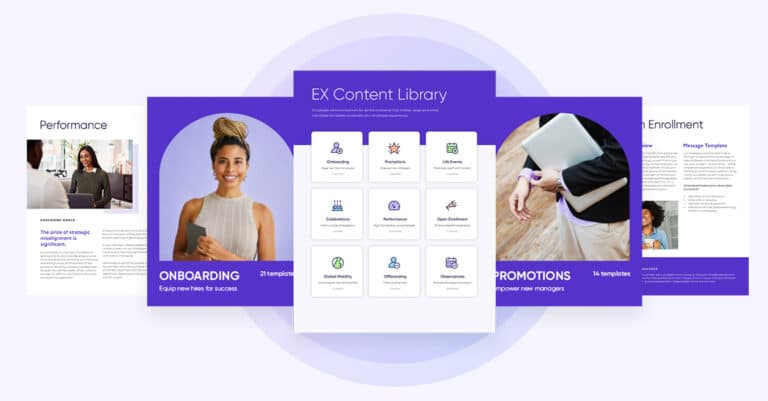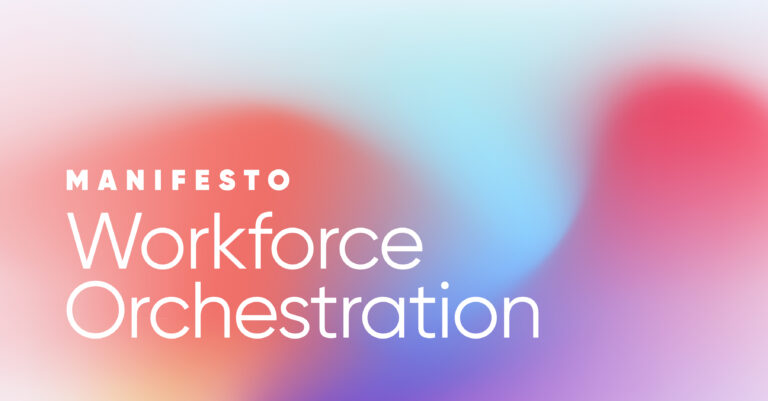Dear Firstup: Internal communications at my organization is spread across multiple departments. Marketing hosts events, HR is responsible for employee benefits, and our comms team creates all corporate communications. So, which department owns internal communications?
It’s true: Internal communications can be owned by various departments. It all depends on what arrangement will work best to provide a great employee experience.
Whatever you decide, it will help to have a clear communications strategy. And part of that clarity means defining which department should be in charge of which function.
Improving employee experience to increase engagement
Why does your communications strategy matter? According to a recent Gallup poll, the percentage of engaged workers in the U.S. is now at 39%. While this number is higher than previous years, the study found that engagement is highly related to positive business outcomes.
Having a defined internal communications strategy is vital to providing a positive employee experience and increasing engagement. In order to craft a good strategy, you need to know what your workers need in order to succeed. First, you need a good understanding of what your employees do, their friction points, and what they value in communications. Then, try different internal communications strategies. Here’s an example of how a company could break down the responsibilities of owning internal communications.
Who owns internal communications?
1. Human Resources
HR is one of the best choices for owning internal communications as it works with every employee and department in an organization. HR collaborates with workers during recruitment and onboarding, and is in touch with employees throughout their employment. HR usually has the most knowledge about what employees need and their opinions as they are responsible for hearing feedback from an entire workforce.
Being connected to workers creates a great opportunity for owning internal communications. HR also has a relationship with different business units and is thus able to get a better perspective of the nuances among departments. This is a huge asset when creating a communications strategy that seeks to empower and engage a workforce.
Another huge asset that HR can take advantage of is access to data based on their workforce. HR can collect data based on retention rates and levels of employee happiness. Studying your workers can lead to informative insights that help you learn what different workforce segments value. These insights can help you improve your communications strategy so that it is more effective and engaging.
2. Internal communications
Many organizations have internal comms teams, which may be independent, or sit under marketing, human resources, or corporate communications. The advantage is having a dedicated department to plan, create, and publish employee communications with the best technology available.
They will own and administer the strategy of how an organization keeps their employees informed and aligned. They would also oversee any processes on creating internal content, such as newsletters, mobile push notifications, and print, and distribution channels like email, intranet, company app, etc. Additionally, they would plan communications for any change management and crisis communications.

3. Decentralized communication
Decentralized communication is the latest trend shaping internal communications. Decentralized communication promotes ownership of communications on a departmental basis. Instead of having one department dedicated to all internal communications, you place a dedicated communications person in each department. By placing a communicator in each business unit, messaging can feel more relatable to individual departments. Communications can be more easily targeted towards a team’s specific function or workflow.
Compared to other strategies, decentralized communication is very effective at creating authentic, personalized, and relatable content. Our Comms Effectiveness Survey found that personalization drives more frequent engagement and higher retention rates. By creating more targeted messages, you can increase employee engagement.
For example, a team manager at a specific branch could be approved (by the Internal Communications) to share content relevant to the team’s location. Team members will be more interested in this content as it is relevant to their job, comes from someone they know, and is aimed at them. While it can be difficult to give creative control to multiple individuals, we suggest having a management system that allows you to set approval guidelines to ensure posts are on brand.
4. C-suite
One of the top priorities for companies is creating an amazing employee experience. Organizations are increasingly choosing to appoint a Chief Experience Officer dedicated to attracting, engaging, and retaining workers.
Dedicated communications leaders can unify an organization’s messaging and create a seamless communications experience. Having a specific chief officer for internal communications will also help personalize your workers’ communications experience. Having a leader in charge of communications can help align all messaging with company culture and goals.
5. Human Resources-Information Technology partnership
Today’s workplace is defined by rapidly changing technology. New platforms and tools are constantly being developed for workforces. From onboarding throughout employment, technology defines every interaction a worker has with an organization.
With so much technology available, employees now expect that the technology that they use in the office will be comparable to the technology they use at home. This creates an imperative for companies to empower their employees with the best technology available.
HR and IT can form a strategic alliance to provide the best communications experience. According to Gartner, by 2022, 75% of organizations will include employee experience improvement as a performance objective for HR and IT groups. This emphasis on employee experience means technology decisions will continue to play a key role in shaping internal communications.
You can elevate your communications strategy with tools that help your employees do the best work they can. Having a workforce communications platform can facilitate a seamless communication experience and help keep distributed team members up-to-date on organizational changes.
Recap
Creating a positive employee experience begins with how you reach and engage your workforce. Different departments can own internal communications based on what is most effective for your organization. In order to understand the best way to communicate with your workers, you need to know what tools and messaging your employees require to succeed.
HR or a dedicated internal comms team are clear candidates for owning internal comms as they have a close understanding of the employee journey. Whereas the C-suite can provide leadership and can set the tone for an entire organization. Meanwhile, decentralized communications can feel both authentic and relatable; it can also generate more content as more people take ownership over creating and delivering communications.
A strategic partnership between IT and HR can empower employees by providing them with the best technology available. Regardless of which department own internal communications, having a clear strategy in place will help optimize your employee experience.













